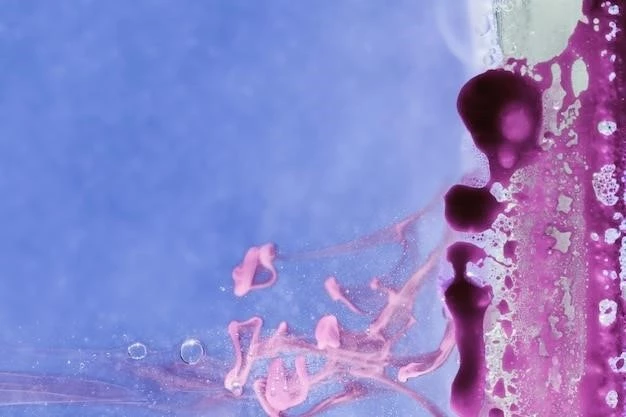Disease ⎻ Hermaphroditism
Hermaphroditism is a medical condition where individuals have both male and female reproductive organs. This article explores the complexities of hermaphroditism, from understanding intersex conditions to the biological basis of the disorder.
Introduction to Hermaphroditism
Hermaphroditism, also known as intersex, is a rare condition where an individual is born with both male and female reproductive organs. It challenges traditional notions of binary gender classification and highlights the complexity of human biology. Hermaphroditism occurs due to various genetic, hormonal, or environmental factors, leading to atypical development of the reproductive system. The presence of ambiguous genitalia at birth often prompts medical evaluation and diagnosis.
Individuals with hermaphroditism may face challenges related to their physical, emotional, and social well-being, as the condition can impact their sense of identity and self-esteem. Understanding hermaphroditism requires a nuanced approach that considers both the biological and psychological aspects of the individual’s experience.
Throughout history, hermaphroditism has been a subject of curiosity and misunderstanding, leading to stigmatization and discrimination. However, modern medical advancements and increased awareness have paved the way for a more inclusive and empathetic understanding of intersex variations.
It is crucial to recognize that hermaphroditism is a natural variation in human biology and not a disorder that requires ″fixing.″ Acknowledging and respecting the diversity of gender identities and expressions is essential in creating a supportive and inclusive environment for individuals with intersex traits.
Understanding Intersex Conditions
Intersex conditions encompass a range of variations in sex characteristics that do not fit typical definitions of male or female. These variations can manifest in chromosomal, hormonal, or anatomical differences that lead to atypical development of the reproductive system. Intersex traits are more common than previously thought, with estimates suggesting that about 1.7% of the population may have intersex variations.
Intersex variations challenge the binary understanding of sex and gender, highlighting the diversity of human biology beyond the traditional male-female dichotomy. Conditions like hermaphroditism raise important questions about the complexity of sex determination and the limitations of strict categorization based on genitalia alone.
Medical professionals use a multidisciplinary approach to diagnose and manage intersex conditions, considering factors such as chromosomal patterns, hormone levels, and physical characteristics. Each individual’s experience with intersexuality is unique, and treatment decisions should prioritize the individual’s well-being and autonomy.
It is essential to emphasize that intersex variations are not inherently pathological or in need of ″correction.″ Rather, they represent natural variations in human biology that deserve acceptance and understanding. Increased awareness and education about intersex conditions can help combat stigma and promote inclusivity in healthcare and society.
Understanding intersex conditions requires a shift towards a more inclusive and affirming approach to gender diversity. By recognizing and respecting the complexity of human biology, we can create a more supportive and equitable environment for individuals with intersex traits.
Biological Basis of Hermaphroditism
Hermaphroditism has a complex biological basis that involves variations in sex chromosomes, genes, and hormonal influences during fetal development. In typical development, the presence of two sex chromosomes (XX for females and XY for males) guides the formation of reproductive organs. However, in cases of hermaphroditism, there can be genetic or hormonal factors that disrupt this process.
Some individuals with hermaphroditism may have atypical sex chromosome patterns, such as XXY (Klinefelter syndrome) or XO (Turner syndrome), leading to variations in sexual development. Hormonal imbalances during crucial stages of gestation can also affect the differentiation of the gonads, potentially resulting in the development of both ovarian and testicular tissue.
The interplay between genetic, hormonal, and environmental factors can influence the degree of ambiguity in an individual’s genitalia and reproductive anatomy. The complexities of hermaphroditism challenge traditional notions of binary sex determination and underscore the variability in human biological development.
Diagnosing the biological basis of hermaphroditism often involves genetic testing, hormone analysis, imaging studies, and physical examination to understand the underlying mechanisms contributing to the intersex condition. Healthcare professionals work collaboratively to provide a comprehensive evaluation and develop personalized treatment plans that respect the individual’s autonomy and well-being.
By exploring the intricate biological processes involved in hermaphroditism, researchers and healthcare providers can gain valuable insights into the diversity of human sex development and contribute to the advancement of inclusive and affirming healthcare practices for individuals with intersex traits.
Medical Diagnosis of Hermaphroditism
Diagnosing hermaphroditism involves a thorough medical evaluation that encompasses a range of physical examinations, imaging studies, hormonal analysis, and genetic testing. When a newborn presents with ambiguous genitalia, healthcare providers conduct a series of assessments to determine the underlying cause of the intersex condition.
Physical examinations help assess the external genitalia and internal reproductive organs to evaluate the extent of sexual differentiation. Imaging studies such as ultrasounds, MRIs, or CT scans can provide detailed information about the internal structures, including the presence of ovarian, testicular, or ambiguous gonadal tissue.
Hormonal analysis plays a crucial role in understanding the hormonal balance within the body, which can impact the development of secondary sexual characteristics and the function of the reproductive system. Blood tests are used to measure hormone levels, including testosterone, estrogen, and other key hormones involved in sexual development.
Genetic testing is often conducted to identify any chromosomal anomalies that may contribute to the intersex condition. Variations in sex chromosome patterns, such as XXY, XO, or mosaic patterns, can provide valuable insights into the genetic basis of hermaphroditism and guide treatment decisions.
A multidisciplinary team of healthcare professionals, including endocrinologists, geneticists, urologists, gynecologists, and psychologists, collaborate to provide comprehensive care and support to individuals with hermaphroditism. The diagnosis process aims to understand the underlying biological factors contributing to the intersex condition and tailor treatment plans to meet the individual’s unique needs.
Treatment Options for Hermaphroditism
The treatment of hermaphroditism is highly individualized and depends on various factors, including the specific intersex variation, the individual’s health status, and their personal preferences; The goal of treatment is to support the individual’s physical and emotional well-being while respecting their autonomy and identity.
One common approach to managing hermaphroditism is a multidisciplinary care model that involves input from endocrinologists, urologists, gynecologists, psychologists, and other specialists. This collaborative approach ensures comprehensive evaluation, personalized treatment plans, and ongoing support for the individual.
Medical intervention for hermaphroditism may include hormonal therapy to optimize hormone levels and promote the development of secondary sexual characteristics consistent with the individual’s gender identity. Hormone replacement therapy (HRT) can help feminize or masculinize the body based on the individual’s desired gender expression.
Surgical interventions may also be part of the treatment plan for individuals with hermaphroditism. Surgical options range from procedures to reconstruct or remove reproductive organs to cosmetic surgeries to align external genitalia with the individual’s gender identity. Surgical decisions are made in collaboration with the individual and their healthcare team.
Psychological support is an integral component of hermaphroditism treatment, recognizing the emotional impact of living with an intersex condition. Counseling, therapy, and support groups can help individuals navigate their gender identity, body image, relationships, and societal perceptions in a safe and supportive environment.
It is essential for healthcare providers to approach hermaphroditism treatment with sensitivity, cultural competence, and a commitment to upholding the individual’s rights and dignity. By offering informed consent, ongoing communication, and holistic care, healthcare teams can empower individuals with hermaphroditism to make informed decisions about their health and well-being.
Psychological Impact of Hermaphroditism
Hermaphroditism can have profound psychological implications on individuals, affecting their sense of identity, self-esteem, and mental well-being. Growing up with atypical reproductive anatomy can lead to feelings of confusion, isolation, and stigma, as societal norms often prioritize binary conceptions of gender.
Individuals with hermaphroditism may experience challenges related to body image, gender dysphoria, and interpersonal relationships. Internal conflicts about gender identity and societal expectations can create significant stress and emotional turmoil, highlighting the importance of psychological support in the management of intersex conditions.
The psychological impact of hermaphroditism extends beyond the individual to their families, partners, and social circles. Disclosure of an intersex variation can provoke varying reactions, ranging from acceptance and understanding to discrimination and prejudice, further complicating the individual’s emotional well-being.
Access to mental health professionals, counselors, and support groups can play a crucial role in helping individuals with hermaphroditism navigate their unique challenges and develop coping strategies. Therapy can provide a safe space for exploring feelings, addressing fears, and fostering resilience in the face of societal pressures.
Educating families, communities, and healthcare providers about the psychological impact of hermaphroditism is essential in promoting empathy, acceptance, and inclusivity. By fostering a supportive and non-judgmental environment, individuals with intersex traits can feel empowered to embrace their identity and navigate the complexities of living with an intersex condition.
Support Networks for Individuals with Hermaphroditism

Support networks play a vital role in providing individuals with hermaphroditism the resources, understanding, and community they need to navigate the challenges of living with an intersex condition. These networks offer a safe space for sharing experiences, accessing information, and connecting with others who understand their journey.
Online platforms, such as forums, social media groups, and virtual support networks, enable individuals with hermaphroditism to connect globally, breaking down geographical barriers and fostering a sense of belonging within the intersex community. These digital spaces provide opportunities for peer-to-peer support, sharing resources, and advocating for intersex rights.
Local support groups and organizations dedicated to intersex advocacy offer in-person meetings, educational events, and outreach programs to raise awareness about hermaphroditism and provide holistic support to individuals and their families. These groups often collaborate with healthcare providers, educators, and policymakers to promote inclusive practices and policies.
Peer support programs, mentorship initiatives, and counseling services within support networks can empower individuals with hermaphroditism to embrace their identity, challenge societal norms, and advocate for their rights. By fostering a sense of community and solidarity, support networks create a platform for empowerment and self-advocacy.
Participation in support networks not only provides emotional validation and practical guidance but also contributes to broader social movements aimed at destigmatizing intersex variations, promoting diversity, and upholding the rights of individuals with hermaphroditism. By joining together, individuals can effect positive change and promote a more inclusive and equitable society for all.
